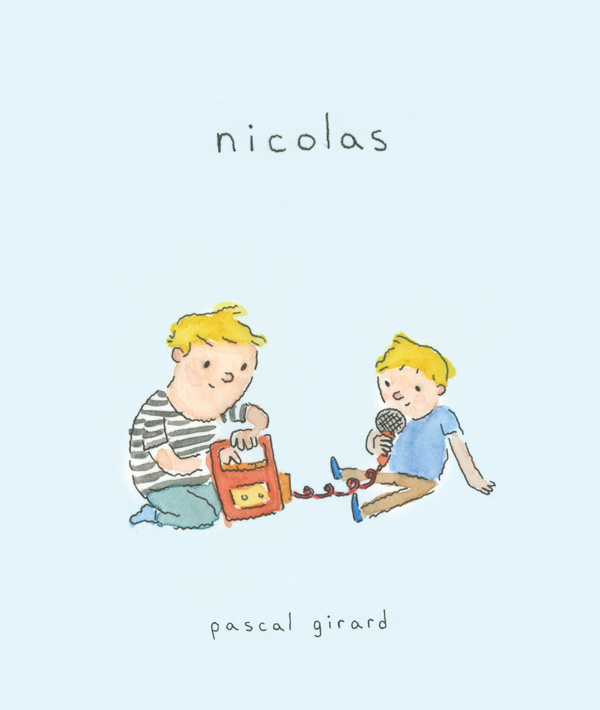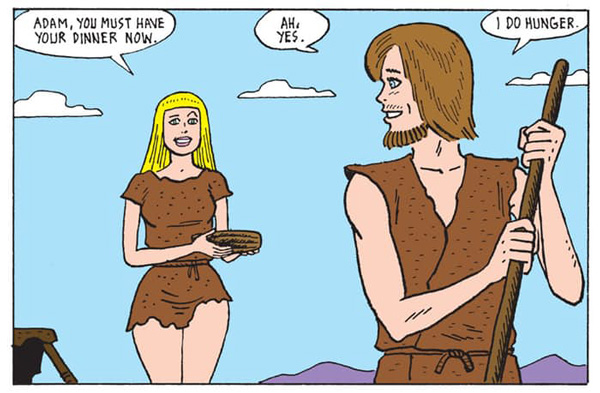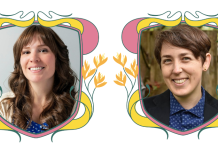This is a deceptively simple book that takes slices from the life of creator Pascal Girard’s life that all revolve around his younger brother, who died as a child. Girard’s cartooning takes form in simple scrawls, but the childlike renderings hint at the young man who lives inside Girard and has since his brother died.
Each simple line is an utterance by someone hidden trying to express himself and his anger but unable to focus in on what exactly his emotions spring from. Clearly, they sprouted from the death of his brother, but the reality of that death is so complex and without a center — there is no blame to go around — that anger can only be expressed without a target.
Girard tells his own story with clarity, never letting himself off the hook easily, nor coming down too hard on himself. He has patience for his own life — and if he doesn’t, who will?
Girard must let his story — and his self-examination — unfold in vignettes. Rather than intricately going over the sweeping psychology of the incident and his life after, he focuses in on the little moments that speak to the larger truths. Particularly sad are the moments just after Nicolas’ death, where, as a young boy, Girard can’t possibly live up to the grief that is no doubt expected of him.
He doesn’t quite understand the big deal, and he expresses that confusion with a kid’s nonchalance and self-indulgence. As the years wear on, we see how the whole of growing up becomes a prolonged kind of grieving for Girard, an elongated process that includes the creation of this book as part of it. Originally published 10 years ago, Girard has added an afterword to this new edition that traces even further how Nicolas affects Girard’s current relationships and his own psyche.
The Garden of Flesh by Gilbert Hernandez
The Bible is renowned for many things, and one of them is all those “begats.” The word “begat” is used 142 times, many of them in the Book of Genesis, and that’s where Gilbert Hernandez’s The Garden Of Flesh comes in. Each “begat” stands for a time Biblical characters had sex, and with this slim volume, Hernandez makes those moments at least as important as any other in the stories of Adam and Eve, Cain and Abel, and Noah, and sometimes mixes the two together. Eve is tempted because the Devil has sex with her, for instance.
The art is rendered in that clear style Hernandez is renowned for and, as such, this is one of the least erotic, most comical pornographic works you’ll encounter. But pornography at its core can be pretty comical, as can the Bible, so this seems like a reasonable enough marriage. And even if you’re not really into hardcore depictions of Bible stories — I remember this was a recurring idea on Al Goldstein’s public access show in New York City in the 1980s — you can at least approve of the existence of such a work, with Hernandez undercutting the sanctity of the Old Testament stories by plainly depicting the smut that is already implied.
The Bible offers much room for sequels, though I’m not sure any are necessary. The point is taken.










I like Girard as I like Jeffrey Brown, Chester Brown, and Michel
Brown* BIGFOOT, a nice story whose premise hides a rom-com (not unlike Kurt Wolfgang’s WHERE HATS GO).
* REUNION, a hilarious comedy where he imagines his high-school reunion going wrong in all the worst possible ways.
* PETTY THEFT, a bittersweet romance positing that he sees a girl stealing one of his comics in a bookstore, follows her, and develops an awkward relationship.
They all tend to be pricey graphic novellas, but BIGFOOT’s 12-panel grid makes it a better bang for the buck. And they have online excerpts, such as the one at https://www.drawnandquarterly.com/bigfoot
As for THE GARDEN OF FLESH, how does it compare to Crumb’s BOOK OF GENESIS?
@Simon
There’s really no comparison between Crumb’s Genesis and Hernandez’s GotF. Beto takes two stories — Adam and Eve, and Noah and the Flood and turns them into erotic works – lots of spunk and giant boobs. I think the whole book is less than 100 pages.
Probably the closest comparison would be Chester Brown’s Mary Wept Over the Feet of Jesus in that they find sexual content in the vagueness of Biblical writing. Although Beto doesn’t need to spend 200 pages explaining why he did it.
Comments are closed.